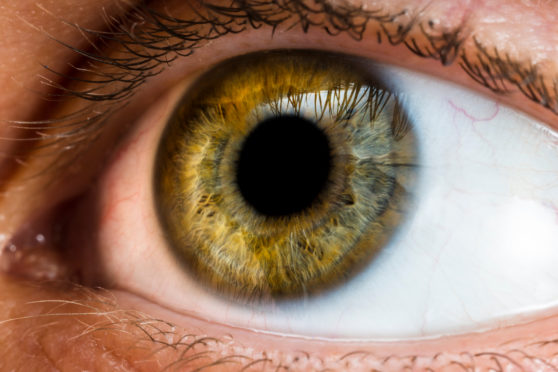
As William Shakespeare once wrote, the eye is the window to the soul. But if the truth be told, the eyes are actually a porthole to so much more.
In fact, a simple eye test could save your life. Stats show that only one in five people know a routine visit to the optician not only examines your eyesight, but can also assess the general health of your eye – and give a clear view of warning signs for a range of
life-threatening illnesses.
So, a visit to the opticians really is more essential than you might think.
“Your eye is the one part of the body where we can see blood vessels in their natural habitat without being invasive,” Willis Wilkie, lead optometrist at Wilkie & Rider Opticians, said.
“And these can be key in spotting a whole host of health conditions.
“Sometimes we can spot something so serious that it actually saves someone’s life.”
Willis, who has been a practicing optician for almost 10 years, said its all to do with the mechanics at the back of the eye.
Tiny blood vessels and nerves can hold telltale signs that something is untoward in
another part of the body.
“The blood vessels can change when the body is experiencing certain conditions. For example, they can leak, or the optic nerves can be swollen, or there can be a mass at the back of the eye – and all these tell us that something is wrong,” Willis explained.
Willis’s career as an eye specialist came after years spent watching his father in the profession.
But even in just one generation, he says there have been significant developments in the techniques and technology used in the industry.
“Eye tests these days are much more advanced than they were 40 years ago,” Willis said. “We still have the old eye chart with the letters, but we also have digital retina photography which ensures detail, accuracy and repeatability.
“It gives us a much better view so we can detect any eye health problems, as well as symptoms of other health conditions.
“We also have the air puff test and drops we can use in the patients’ eyes to make the pupils bigger – which helps make our job a little easier.
“In the past, we couldn’t do much about that. Now, we have options.”
Having your eyes tested is recommended every two years until the age of 60, then annually.
And Willis says, even if you don’t wear glasses or think you might need glasses, it’s always a good idea to schedule an appointment, just to make sure everything is as it should be.
“Most people don’t come to us unless they feel there is a problem with their sight, like they’re getting headaches at the computer, or they are struggling to read things at a distance.
“But eyes are very important and we should be having them tested to make sure there are no signs of problems, such as glaucoma, cataracts or macular degeneration.
“Or, of course, more serious illnesses which can be picked up simply by looking at the back of the eye.
“From diabetes, high blood pressure and cardiovascular disease to arthritis and even tumours, there’s so much we can see.
“So if you’re worried about your eyes, it’s probably wise to see an optician first before calling your GP. Hopefully we can work out what the problem is – and spot any other health issues while we’re there.”
Diabetes
It’s important to remember that when diabetes is in its early stages, diabetic retinopathy does not usually cause any noticeable symptoms, so you may not even know you have it.
However, an eye test can detect the condition before you notice any changes to your vision.
Diabetes can affect small blood vessels in the eye, damaging the retina, which is vital for sight. And an eye test can pick up tiny leaks from damaged blood vessels.
High blood pressure
It is not uncommon for someone to be informed that they may have high blood pressure as a result of observations made by their optician during a routine eye test.
When examining the retina, they can see whether or not the blood vessels are narrowed or are leaking.
Cardiovascular disease
Having high cholesterol – which can lead to heart problems or a stroke – doesn’t usually have any symptoms.
However, it can cause blockages in any of the body’s blood vessels, including those in the eyes. Opticians can spot little lumps of cholesterol. These can block blood vessels resulting in short episodes of
visual loss.
Tumours
Some people may be aware that eye tests can detect cancers of the eye such as melanomas, but they can also detect signs of brain tumours.
Swelling of the optic nerves can be visible during an eye test, and can indicate a brain tumour is present.
Arthritis
Autoimmune forms of the disease, like rheumatoid arthritis, as well as causing inflammation in your joints, can also cause inflammation in your eyes.
This can commonly cause dry eye, or occasionally more serious conditions such as inflammation of the iris.

Enjoy the convenience of having The Sunday Post delivered as a digital ePaper straight to your smartphone, tablet or computer.
Subscribe for only £5.49 a month and enjoy all the benefits of the printed paper as a digital replica.
Subscribe